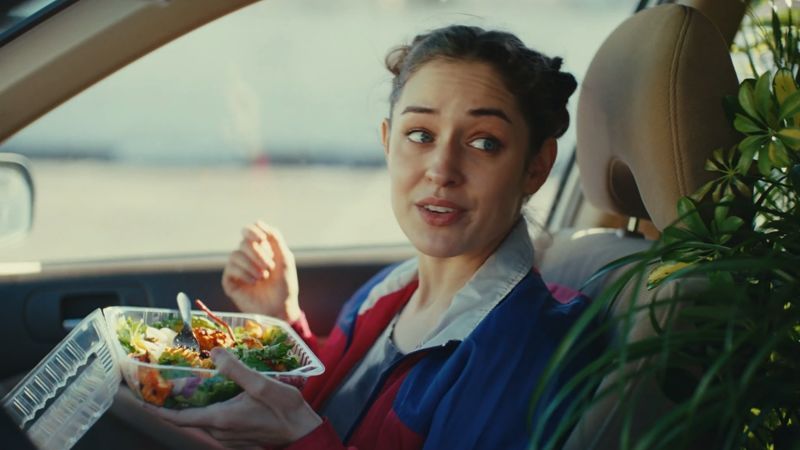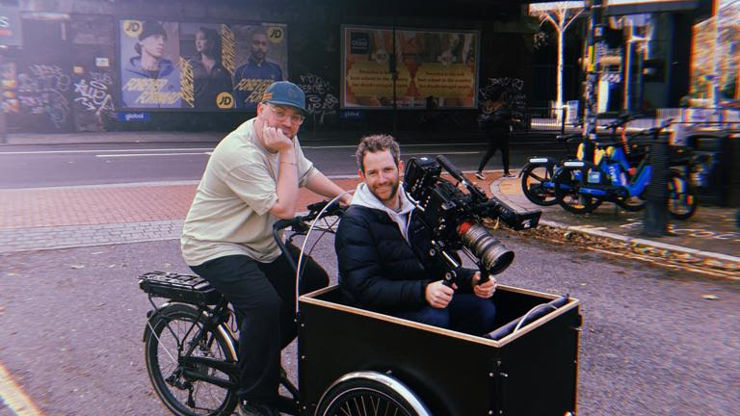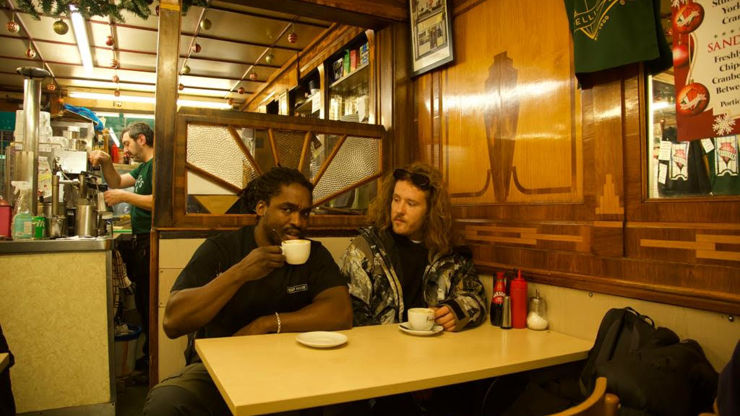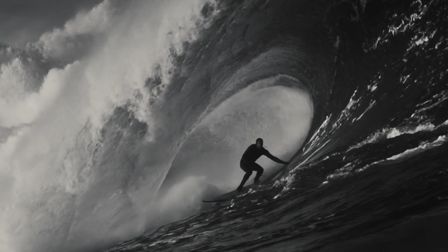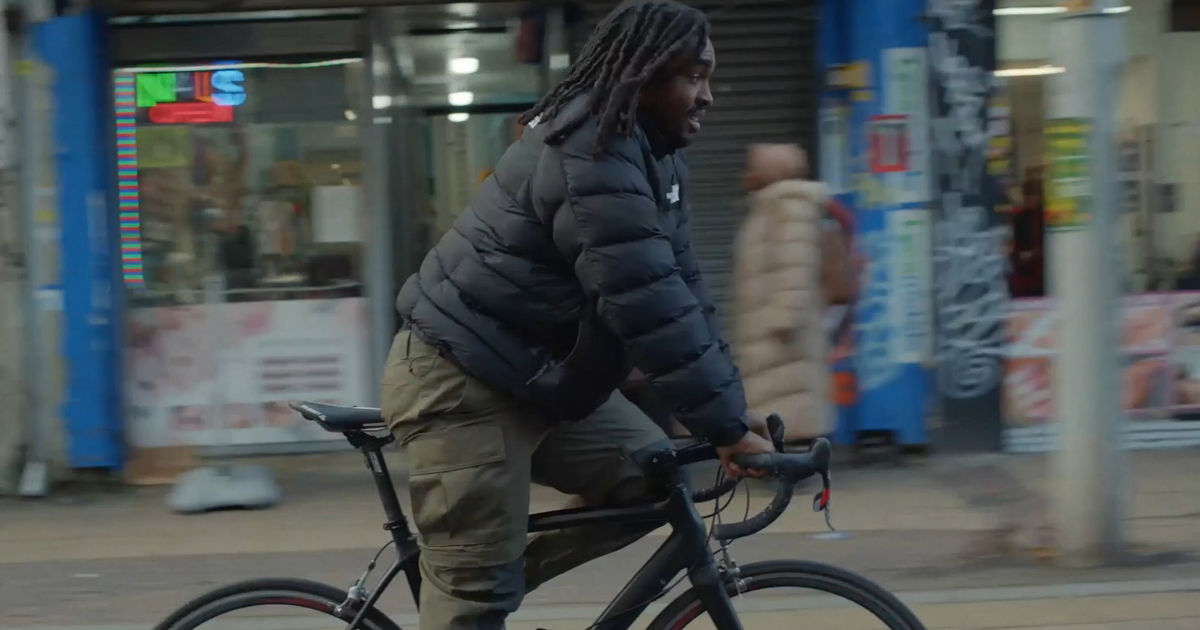How Broken Antenna filmed a tale of two towns
More than just a music video, the promo for Hak Baker and Joe Armon-Jones’ track Wrong Side of Town is also a revealing mini-documentary about the duality of an East London neighbourhood bifurcated by gentrification. Knucklehead directing duo Broken Antenna (aka. Gustav Newby and Myles McAuliffe) share how they created their fascinating, mixed-media, genre-splicing film.
Can you tell us how you developed the concept for the video?
MM: Growing up in London you see a lot of changes, and the issue of housing and communities has always been something I’ve felt strongly about. I grew up in a block of council flats within the Elmington Estate in Camberwell. It was where my parents grew up, my nan, my cousins, aunts and uncles lived there too. When I was about 14 or 15 everything was knocked down except for the one block I lived in and everyone was moved away to other areas while the council rebuilt around my block. The council then ran out of money and sold the land to private developers. So I was quite passionate about making a video showing this. From there, it was a case of a making a film with two halves – the right side of town and the wrong side of town.
Different areas of London are used in different ways, by different parts of the community without them really acknowledging one another.
GN: We initially sat down [with Baker and Armon-Jones] and spoke about what the song meant to them. We talked about gentrification and how different areas of London are used in different ways by different parts of the community without them really acknowledging one another. For example areas like Dalston, Brixton and Peckham are completely different in the daytime when they’re focussed around the local residents and the use of the shops and markets versus the night time when loads of people flock to the area to basically just get pissed and have a good time.
Credits
powered by
-
- Production Company Knucklehead
- Director Broken Antenna
-
-
Unlock full credits and more with a Source + shots membership.
Credits
powered by
- Production Company Knucklehead
- Director Broken Antenna
- Color Cheat
- DP Thom Neal
- Colorist Jack McGinity
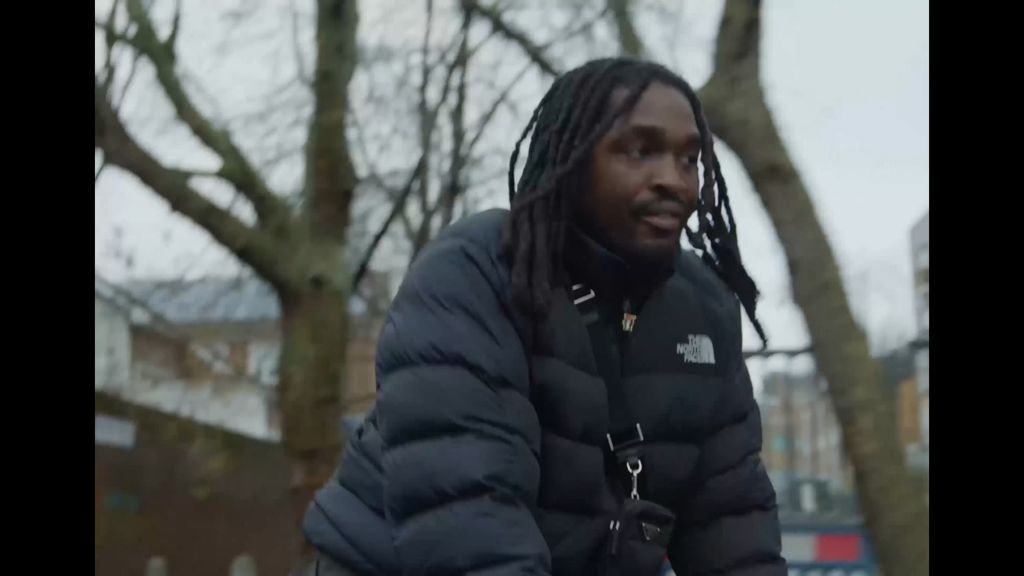
Credits
powered by
- Production Company Knucklehead
- Director Broken Antenna
- Color Cheat
- DP Thom Neal
- Colorist Jack McGinity
Did you closely collaborate with the two musicians? What was their goal with the promo?
MM: You can’t just make a video like this with any musician. When we work with Hak we always want the people featured to be his people. When showing the right side of town, having people embedded in the community close to Hak meant that we could authentically show it, we didn't have to fabricate tapping into people's lives for a music video.
GN: We’ve worked with Hak [Baker] a lot over the last seven years, I think this is the seventh video we’ve worked with him on and it’s our second with Joe [Armon-Jones]. We were running around London with our DP Thom [Neal] filming bits here and there and kept them in the loop with the kind of stuff we were getting. Then got them more involved for the performances and when the edit started taking shape.
How did you come to choose the documentary style footage you included, such as the boxing centre and housing meetings etc?
MM: From the NHS workers striking for fair pay, to the people in the housing meetings trying to
figure out how best to spend the budget, every person featured in the video is working
towards changing and influencing the city, that was our criteria for what we should include.
There were a lot of other things that we wanted to include, but they would have opened up
wider narratives that we didn’t have to have space for.
Having people embedded in the community close to Hak meant that we could authentically show it, we didn't have to fabricate tapping into people's lives for a music video.
GN: The guy we interviewed at the boxing club is Ezekiel who is Hak’s older brother and Neville from E Pellici’s is also someone who Hak is really close to, so we were all keen to get both of them involved. The housing and council meetings were always something we thought would add a broader context to the situations affecting London that you wouldn’t get from more traditional style interviews.
Gustav Newby cycle couriering DP Thom Neal around as he films Hak Baker's bike odyssey. Plus, Baker and Armon-Jones in E Pellicci's cafe on Bethnal Green Road, East London.
It plays very much as a blend of a music video and a documentary, were you influenced by any other promos with a social/political messaging?
MM: The main thing that influenced me was the ending of The Wire. I wanted to make something that showed the natural cycle of the way the city chews people up and spits them out. There is so much promise that is lost in bureaucracy. Also, while we were making the video I was waiting for my mate at the BFI and I watched a short, Lambeth Through Our Eyes and the way that it showcased social imbalance in London really inspired me. Things that presented everything and laid things out as a society not working.
Life isn’t all doom and gloom and we weren’t trying to be preachy, it was more just our observations from our own perspectives.
GN: I don’t think there’s any music promos that influenced us particularly, but there was a documentary called Rat Film that Myles showed me a while back that inspired parts of it. Also there was something about capturing London as it is now with new build property hoardings acting as a backdrop throughout that reminded me of the way films like Babylon, The Long Good Friday or Passport to Pimlico are so entrenched in the way London looked and felt at the time.
Can you expand on how you ended up with the promo's mix of tone – it seems to deftly blend political rage and light-hearted, nostalgic reflection?
MM: Nobody in London is sitting there trying to ruin it - I don’t think. It feels like it sometimes, but I don’t think they are. In my eyes they are, but to them they aren’t... if you know what I mean. This video shows everything and that's where the mix of tone comes from I think; London itself. This isn’t just a sad story, there is hope and there always will be no matter how much the city changes.
GN: I think that’s just what came from it naturally. Life isn’t all doom and gloom and we weren’t trying to be preachy, it was more just our observations from our own perspective even if some of the subject matter in the video is pretty dark.
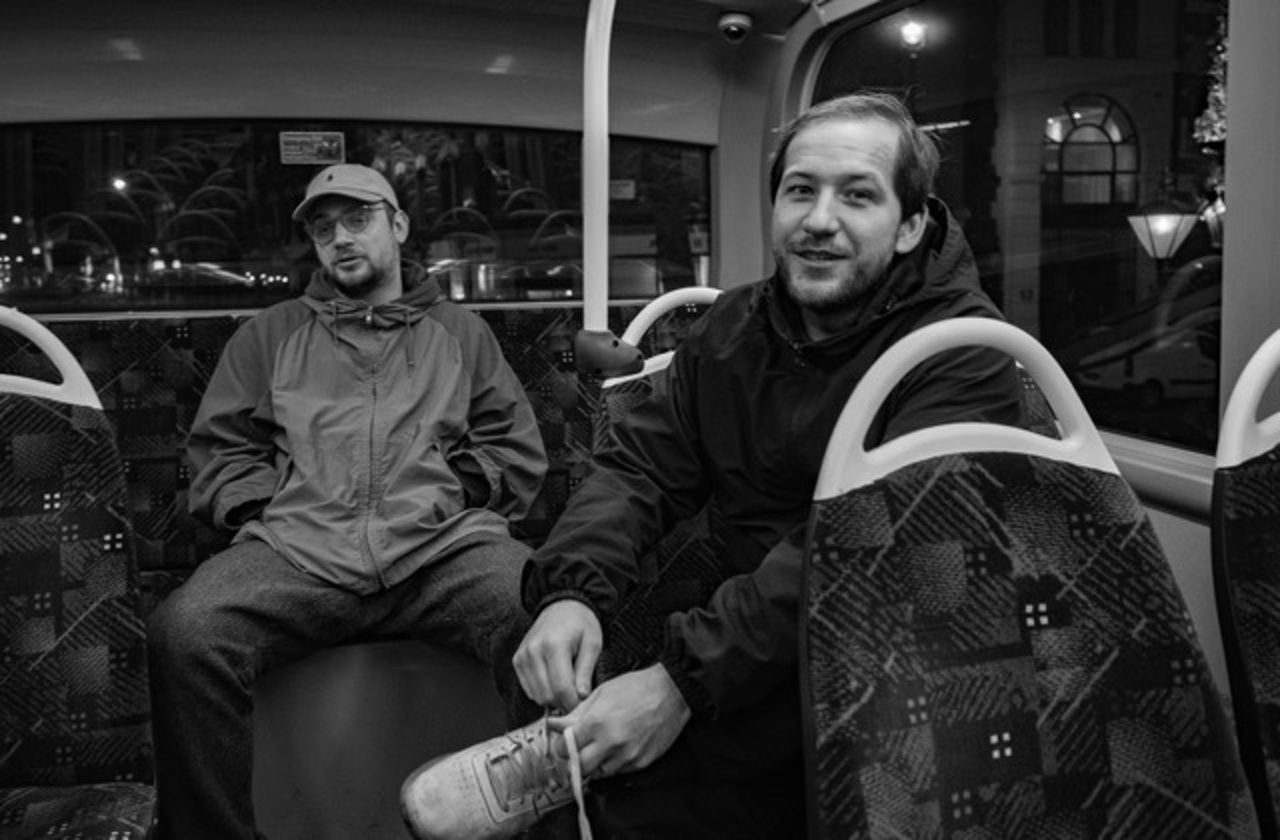
Gustav Newby (left) with Myles McAuliffe (right).
Where was it filmed and how did the locals respond to the shoot?
MM: Some kids asked Hak if he does Drill [an edgy subgenre of hip hop]. They were disappointed he didn’t. He was disappointed that they thought he did. A lot of people asked us if we could help them film things for their YouTube channels.
GN: All over London - the Isle of Dogs, Canary Wharf, Canning Town, Hackney, Peckham, Tottenham Court Road, Trafalgar Square, Westminster, Shoreditch, Bethnal Green, Stepney, Elephant & Castle, Poplar, Aberfeldy, Camberwell, London Bridge, Bermondsey, the City, Lewisham, Hither Green, Forest Hill.
Lows included watching hours of housing meetings where greed is falsely cloaked by the use of words like 'affordable' and 'community'.
We were mostly moving about so there wasn’t too much interaction with locals to be honest, apart from when we were shooting the lamp post memorial bit in Camberwell, quite a few people came up and asked us what had happened.
Any highs/lows/fun bits during the making of?
MM. Highs: The food and having a laugh in E Pellicci's and the coffee in some dumb expensive Willy Wonka style spot in the city.
Lows: Watching hours of housing meetings where greed is falsely cloaked by the use of words like 'affordable' and 'community'.
GN: Cycling around in a courier bike in the rain with Thom in the front filming all the bike stuff was probably the high and the low. By the end of the second day of it I never wanted to cycle anywhere again.
)

